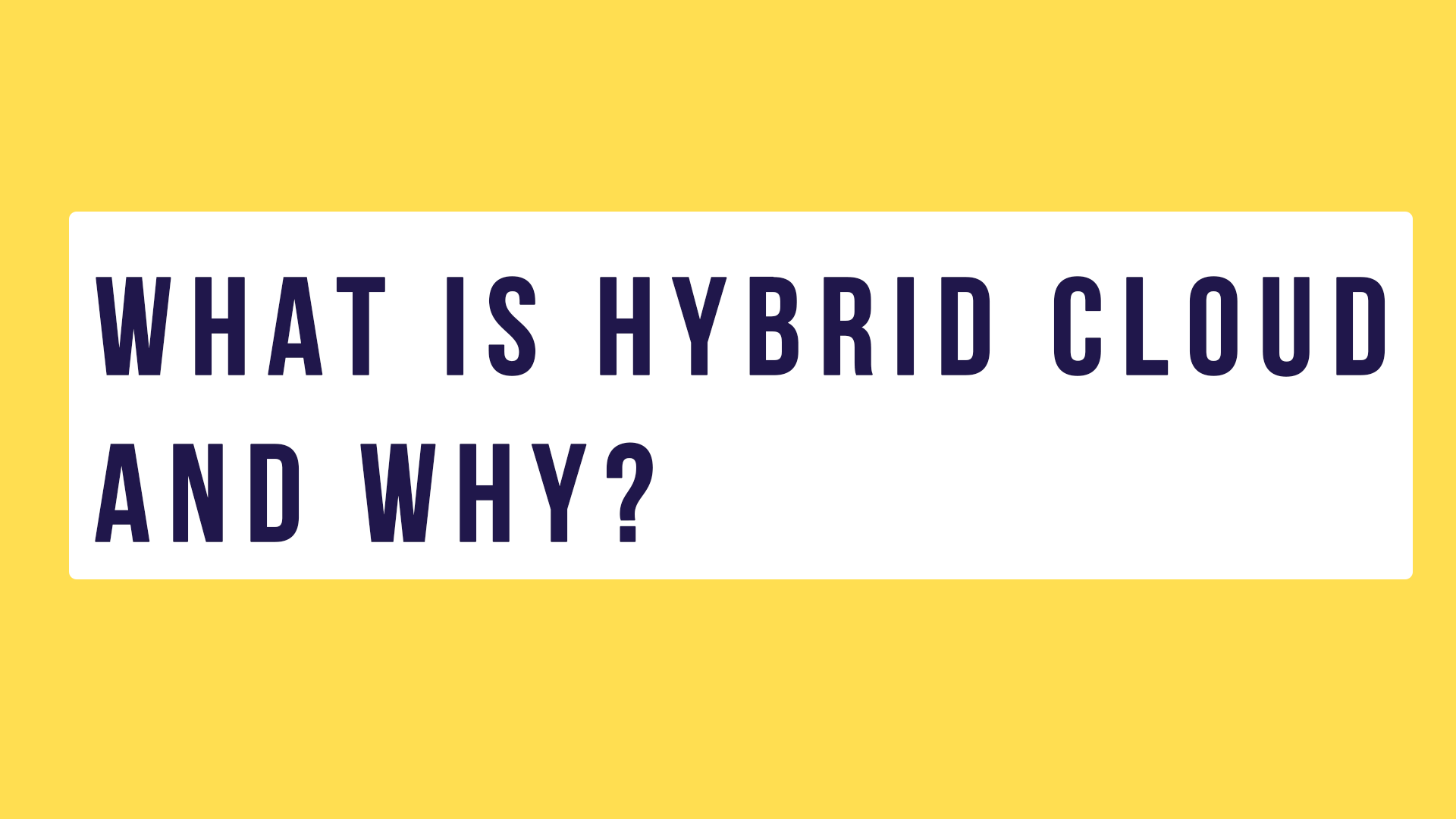What is Hybrid Cloud and Why?
Join me as I explore what Hybrid Cloud is and why organisations are adopting it.

We hear a lot talk about Hybrid Cloud, people mention it as transition stage before moving all your resources into a cloud provider's datacentre, we hear it mentioned as the answer to all your IT needs, as a solution but what is it and why is it something you should know about?
Gartner define Hybrid Cloud as:
“…Hybrid cloud computing refers to policy-based and coordinated service provisioning, use and management across a mixture of internal and external cloud services…”
For me that can be simplified down to three words, It's a Strategy. It's a strategy that allows businesses and organisations to address their technology needs and problems, while taking advantage of both the private cloud services they have and the new public cloud opportunities.
Every business or organisations hybrid strategy and implementation will be different depending on the size of their organisation, their motivations or the applications they support and need to operate their business.

Why Hybrid?
Hybrid has a lot of benefits, as I said it can take advantage of both private and public cloud services.
If we look at the benefits of having your own private cloud/datacentre:
Over the years organisations have made investments in their own datacentres, throwing all that away is hard and costly. I'd say if you have really old hardware that is out of warranty etc, then that is an ideal candidate to change but if you've newer bits of kit then why get rid of them before the end of their life cycle? Look to leverage the good investments you've made.
Staff knowledge is also something that has been invested in and again throwing all that away isn’t something to be done lightly. The years of experience and training that has went into staff is something you want to continue to leverage and take advantage of.
And another benefit of keeping some applications on-prem is compliance, some organisations need to store or retain their data in certain location for compliance or regulatory needs. Doing that in a datacentre you can physically touch or have sole control over is very attractive and makes those compliance needs “easy” to match.
But using public cloud services brings you flexibility, things can happen a lot quicker than traditionally they can on-prem. Hardware lead times can take a long time (I recently ordered a small server for a home project which should have taken 3 weeks to be delivered but is now sitting with a 3 month lead time). I can spin up a server in the public cloud in a matter of minutes.
I can also spin up or down depending on needs and business needs really quickly and easily in public cloud offerings. It's not as easy to do so in a private cloud world.
For me costs within the cloud are also simplified from a IT point of view. You have full visibility of what it's costs for your solutions to run. You can have more control over that budget, by doing things like turning services off out of hours or at weekends.
And lastly you having a public cloud provider as part of your IT strategy means to you start to take advantage of the new technology that is constantly coming on line.
You can test those new features to see if they can help you or would fit within your strategy very quickly. And start to use them or not, depending on your findings. And doing that shouldn't take a long lead time or a lot of investment. So in theory you can innovate and experiment a lot quicker and cheaper than in the past.
Summary
Hybrid is something a lot of organisations are starting to rely on for their IT departments, I think a recently Gartner survey said that over 90% of enterprise are relying on a Hybrid cloud scenario.
It can be great for a lot of organisations and their IT departments and businesses, however it isn't right for everyone and correct research and evaluation should be done to understand if it's the right option and strategy for your organisation.